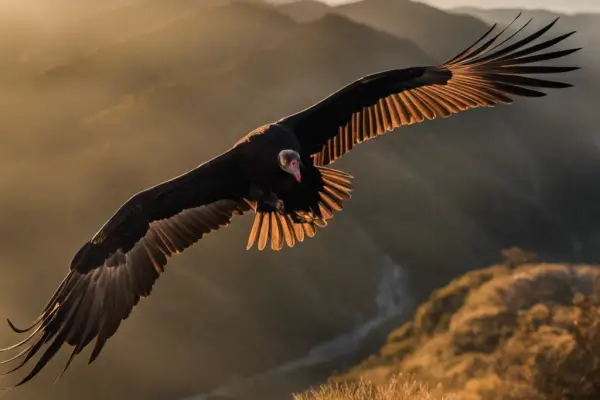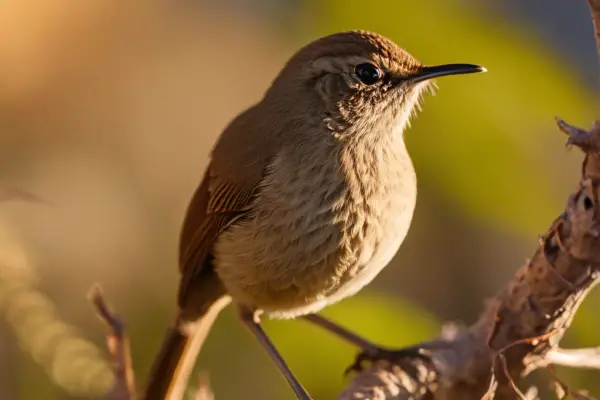As an ornithologist, I have always been enthralled by California’s orange birds. The first time I saw a Hooded Oriole, I can still clearly recall its vivid colors painting my garden like a picture. I can distinguish the unique sounds and actions of each species thanks to my experience in this sector. I think that a nature enthusiast should not miss the Western Tanager’s dance across the trees. Interacting with these birds is more than simply a pastime; it’s a means of establishing a close relationship with the diverse species that exist inside California’s ecosystems.
Key Points
The brilliant orange orchard birds known as orchards, which include the Hooded and Bullock’s orchards, are found in open woodland areas. They are distinguished by their long-distance migratory patterns, whistling melodies, and thin, pointed beaks.
The American Robin, Western Tanager, Northern Flicker, Varied Thrush, Black-headed Grosbeak, and Say’s Phoebe are some other orange birds found in California. Each has unique traits and habitats of its own.
The American Robin lives in deciduous trees and suburban parks, the Hooded Oriole adapts well to California’s varied habitats, the Bullock’s Oriole flits among foliage and forages for insects, and the Western Tanager inhabits coniferous forests, forest edges, and open woodlands. These birds have different preferences for their habitats.
The American Robin has a bright orange breast, the Hooded Oriole and Bullock’s Oriole have striking black and orange or black and white plumage, the Western Tanager has striking orange plumage and vivid orange underparts, and the Northern Flicker has spotted plumage with an orange-cinnamon hue. These orange birds differ in their physical characteristics.
10 Most Common Orange Birds in California
American Robin

The American Robin, with its characteristic orange breast, is a common sight in your garden in California. This bird is readily recognizable by its bright orange breast and contrasting black back and head. It is a frequent sight across North America. The orange markings on the males are brighter than on the females, yet they are both just as good at finding food in wide spaces. The American Robin is a common sight among deciduous trees, but it may also be seen in woodlands and suburban parks. They are among the most well-known and cherished birds in the area, distinguished by their white necks and the little splotches around their eyes as they fly over the grasslands and bushes.
Hooded Oriole

You’ll discover that, despite its colorful plumage, Hooded Orioles are quite rare in California after seeing the American Robin’s widespread presence. Orioles are mostly encountered during their breeding season, unlike Robins. What distinguishes them is as follows:
Males have spectacular black and orange plumage, while females have a grayish back and a more subdued olive-yellow coloration.
Both sexes build elaborate nests out of spider silk and plant fibers, and they have rusty orange breasts.
They are distinguished by their characteristic slightly bent beak and a variety of chatters and whistles.
Although they tend to hide, Hooded Orioles sometimes stop by bird feeders for a short meal.
They are a fascinating challenge to locate because, despite their vivid colors, they mix so nicely with California’s different ecosystems.
Bullock’s Oriole

How do you tell the difference between the secretive Hooded Oriole and the Bullock’s Oriole, two more colorful birds that inhabit California’s woodlands? Males of this species may be identified by their remarkable black and white head design against a stunning orange background of plumage. The Bullock’s Oriole, in contrast to the Hooded Oriole, builds exquisitely woven nests out of plant fibers that hang from tree branches. These native Americans are often seen in California, where they dart amid the flora in search of insects to eat. Even though they don’t have the same vivid colors as the males, female Bullocks Orioles are nonetheless fairly striking with their more muted yellowish tones. Look for their unusual blue-turquoise eggs in the open nests fashioned like cups.
Western Tanager

A Western Tanager is immediately identified by its eye-catching orange coloring; these birds are prevalent among California’s varied birdlife. It is now categorized as a medium-sized bird in the cardinal family, which is distinguished by its vivid colors and unique sounds that reverberate through the woodlands. What distinguishes the Western Tanager is as follows:
bright orange undersides: Its remarkable characteristic distinguishes it from other bird species.
Males display stronger colors during the breeding season to entice females.
Preferred habitats include open woods, forest margins, and coniferous forests.
Adaptable range: These birds are successful in a variety of Californian environments.
Despite their brilliance, their coloration allows them to blend in with the surrounding greenery.
For Californian birdwatchers, seeing a Western Tanager is a highlight of the hobby.
Northern Flicker

One of the most frequent orange birds in California, the Northern Flicker is easily recognizable because to its speckled plumage and unique orange-cinnamon color. This medium-sized bird has an orange underpart contrasted dramatically with a black crescent on its breast. Another amazing sight is their long, pointed wings, which have distinct black and white patterns that are visible even from a distance. It is uncommon for other woodpeckers to engage in the ground-based foraging that these flickers do. Their preferred habitats are parks and open forests, where they forage for insects. Female Northern Flickers have a tan face and no mustache, whilst males are identified by their black mustache. Their distinctive cries and drumming are a common background in many natural locations around California.
Allen’s Hummingbird

You will get enthralled with the Allen’s Hummingbird, a swiftly flying gem with a flaming throat patch that graces California’s sky, as opposed to the ground-foraging Northern Flicker. This explains why these orange birds captivate us so much:
Males are vibrant: Especially in the breeding region, the males of Allen’s Hummingbirds dazzle with brilliant yellow and orange-red hues.
Fast Flyers: Allen’s hummingbird has the same agility in flight as other hummingbirds.
All Year Long Residents: A few decide to spend the whole year in California, visiting gardens and feeders.
Nesting Habits: They build their nests in the enthralling Californian forest environment.
Advantages of Pollination: They are skilled hoverers, which is important for the environment.
Don’t pass up the opportunity to see these gorgeous, sparkling things in your own backyard!
Spotted Towhee

When looking for common orange birds in California, don’t miss the Spotted Towhee, which has rusty sides and spotted wings. Males of this bird have characteristic black upperparts with dazzling white dots set against a black background. Another striking characteristic of the Spotted Towhee is its white belly. In terms of eating, these birds are known to consume seeds and insects. They are often seen in riparian zones and open forests, where they are looking for food among the leaf litter. The Spotted Towhee is a unique species due to its morphological attributes. Females prefer thick, shrubby environments for their habitat, which is reflected in their grayish-brown coloring. Whether you’re in the more untamed regions of California or your own backyard, seeing a Spotted Towhee is always a lovely experience.
Varied Thrush

Another typical orange bird you may see while exploring California’s unique birdlife is the Varied Thrush, which is distinguished by its distinctive black breastband and bright orange belly. Despite its reputation for shyness, the variegated thrush is often seen in the state’s westernmost, thicker forests. These are a few fascinating facts:
Males have a vivid orange underpart, while females have a more subdued color.
Depending on the season, thrushes might be seen foraging for seeds and insects.
They have a dark face pattern and a characteristic black breast.
Use natural fruit-bearing plants and sunflower seeds to entice these birds to your property.
They are a stunning sight for birdwatchers and are closely related to American Robins.
Black-headed Grosbeak

As you continue your birding expedition, you’ll probably come across the magnificent Black-headed Grosbeak, which comes to California’s forests in the summer and is distinguished by its bright orange-cinnamon plumage and unique singing. These birds are amazing to see, their orange bodies striking against a black head and back. Although they may be found in a range of environments, grosbeaks prefer the trees and bushes of riparian areas. They coexist in the orange bird spotlight with species such as the Oriole, but of the 92 species of birds known to exist in California, the Black-headed Grosbeaks are distinguished by their distinct plumage and melodic voice.
Say’s Phoebe With its grayish-brown wings and red belly against a clear blue sky, the phoebe sat on a sagebrush in the California desert.
Discover the Say’s Phoebe, a year-round inhabitant with a rusty orange breast and a tail-wagging habit, while strolling through California’s wide areas. Keep a watch out for this species as you explore the world of orange birds; it’s common to spot it where the earth meets the sky.
Unique Notations: Distinguished by its blue-gray back and reddish-orange breast.
Prefers open spaces like fields and meadows for its habitat.
Behavior: While perched, keep an eye out for its distinct tail-wagging.
Nesting: Constructs cup-shaped nests on ledges of rock or man-made buildings.
Birdwatching Tip: Take notes or take pictures to share with other birdwatchers the next time you’re out.
Distinguish it from the Red-breasted Nuthatch; the Say’s Phoebe is an amazing bird that you should mention to your friends in your email updates!
Commonly Asked Questions
In California, are Brown Birds and Orange Birds the same?
The common brown birds in California have a variety of colors; some have more orange than brown coloring. Some brown birds, such as wrens and sparrows, contain overtones of orange, giving them a look resembling certain orange birds in the area. Many bird species in California are found to have both colors.
Which Bird Has an Orange Color?
You’re probably seeing a brightly colored bird, like an American Robin or a Barn Swallow, which are distinguished by their unique rusty orange plumage.
Which Southern California Bird Has an Orange Chest?
If you encounter a bird in Southern California with an orange breast, you are probably seeing an American Robin. They are widespread in many environments, including your garden.
What Is California’s Most Common Bird?
Because of its extensive presence and orange breast, the American Robin is one of the most frequent birds in California, which is probably why you’re seeing it most often.
Which Kind of Bird Is It and What Color Is Its Chest?
It is likely that you are seeing an American Robin due to its characteristic rust-colored breast. These birds are often seen, and their bright orange bellies stand out against their darker upper portions, making them easy to see.
Final Thoughts
You’ve just stumbled across the vibrant world of orange birds in California! Every bird, from the well-known American Robin to the magnificent Hooded Oriole, brings a unique burst of color to the state’s varied ecosystems. Keep an eye out for these feathery beauties whether you’re an experienced birdwatcher or a beginner. So prepare to identify these 10 common orange avian delights on your next outdoor outing in the Golden State by grabbing your binoculars!




![Red Birds in California [Images + IDs]](https://birdsology.com/wp-content/uploads/2023/09/50269761401_835d6ef726_b-600x400.jpg)
